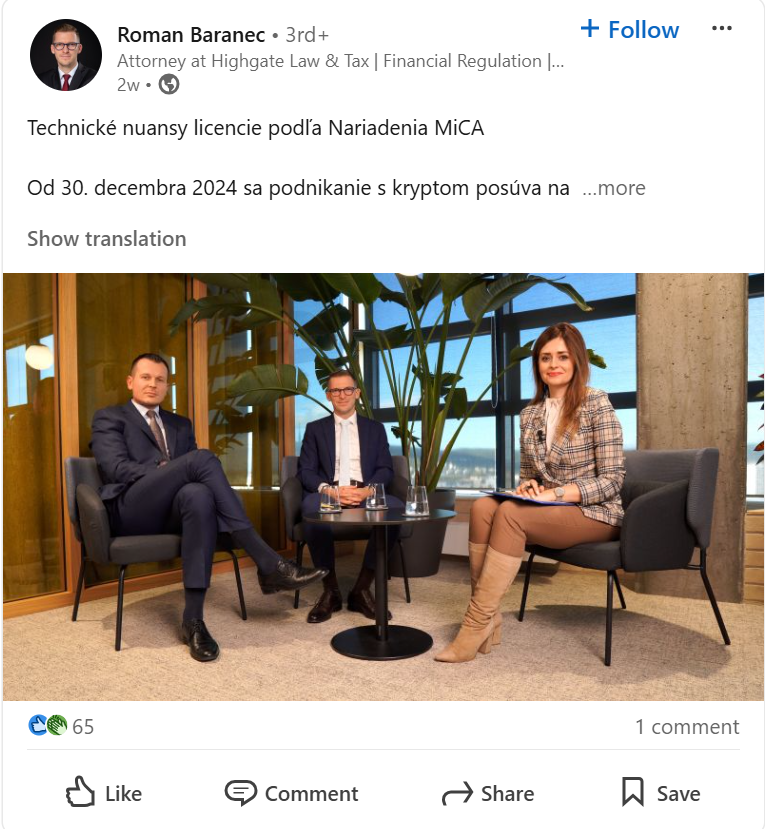
 Technical nuances of the MiCA Regulation license As of 30 December 2024, the crypto business will move to a first-tier level comparable to the requirements for securities dealers. While today it is possible to run a crypto business with only a trade license and a high school education is sufficient, the new MiCA regulation will bring significant changes that will significantly reduce the number of domestic entities operating in the market, but at the same time create pressure to professionalize the services provided. While entrepreneurs will lose some domestic competition, the cryptoasset market will be opened up to traditional financial institutions such as banks and securities dealers. The MiCA licensing procedure thus ultimately becomes a complex transformation process that redefines existing business models in the cryptoasset sector. Peter Varga and Lenka Buchlak and I recorded another video podcast in the Highgate Talks series (link in the commentary), where we discuss, among other things, the following: 📌 Why prudential requirements are not just about pro forma capital raises and redemptions; 📌 What internal regulations mean in practice for crypto asset service providers; 📌 How long the licensing procedure before the National Bank of Slovakia takes and how it is conducted; 📌 Whether entities from third countries will not be favoured when doing business in crypto; 📌 What positives the new regulation brings. At the same time, the specific aspects that the new legislation introduces in the area of cryptoasset business are further discussed on our special Highgate Crypto profile.
Technical nuances of the MiCA Regulation license As of 30 December 2024, the crypto business will move to a first-tier level comparable to the requirements for securities dealers. While today it is possible to run a crypto business with only a trade license and a high school education is sufficient, the new MiCA regulation will bring significant changes that will significantly reduce the number of domestic entities operating in the market, but at the same time create pressure to professionalize the services provided. While entrepreneurs will lose some domestic competition, the cryptoasset market will be opened up to traditional financial institutions such as banks and securities dealers. The MiCA licensing procedure thus ultimately becomes a complex transformation process that redefines existing business models in the cryptoasset sector. Peter Varga and Lenka Buchlak and I recorded another video podcast in the Highgate Talks series (link in the commentary), where we discuss, among other things, the following: 📌 Why prudential requirements are not just about pro forma capital raises and redemptions; 📌 What internal regulations mean in practice for crypto asset service providers; 📌 How long the licensing procedure before the National Bank of Slovakia takes and how it is conducted; 📌 Whether entities from third countries will not be favoured when doing business in crypto; 📌 What positives the new regulation brings. At the same time, the specific aspects that the new legislation introduces in the area of cryptoasset business are further discussed on our special Highgate Crypto profile.
Law & Tax
Tomas Demo
tomas.demo@highgate.sk
Accounting
Peter Šopinec
peter.sopinec@highgate.sk
Crypto
Peter Varga
peter.varga@highgate.sk